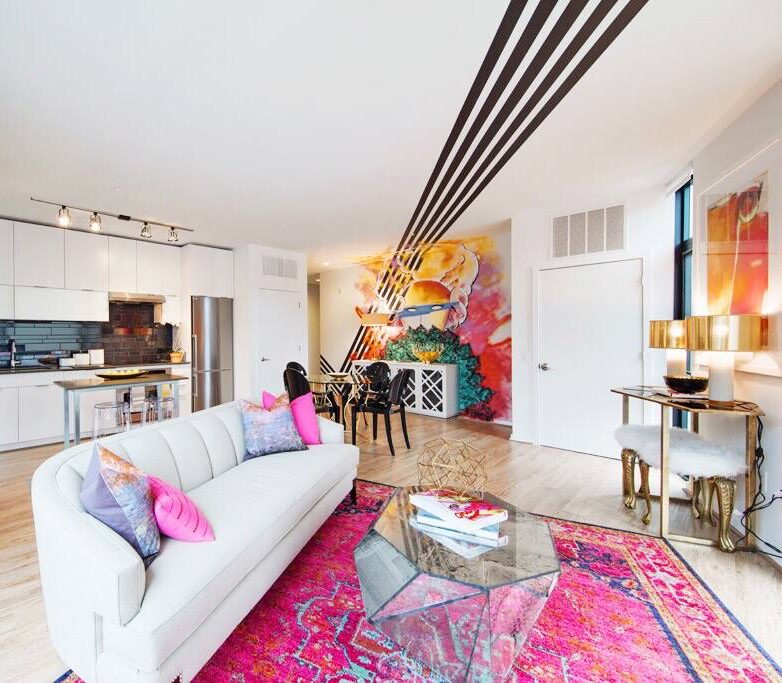 Ah, color. Color is fun. Color is fickle. Color is beautiful. Color is…tricky. There is no version of interior design in which you find success without nailing your color scheme.
Ah, color. Color is fun. Color is fickle. Color is beautiful. Color is…tricky. There is no version of interior design in which you find success without nailing your color scheme.
Color is your most powerful tool for making your space feel the way you want it to. Do you want someone to walk into your living room and feel energized? Do you want your office space to make clients feel at ease? Color is where you start—and we’ve got a couple of trade secrets to help you nail it!
Start with colors you love.
The most important aspect of your space? That it feels like YOU! Every element that goes into the design of your space should tell your story, including the color. It will be easier (and more fun!) to create a palette around a color you love and that expresses your personality.
Look for color inspiration online and in the world around you. Spend some time on Instagram and Pinterest. What colors and shades are you drawn to? A good place to start might even be your own closet! Once you have your favorites, go from there.
Befriend the color wheel.
Think of your interior design project as an open book test, and the color wheel as your cheat sheet! This handy little tool is a foolproof way to choose colors that work well together. All you need is a basic wheel to identify your foundational hues, then you can explore and experiment with different shades in those color families.
If you’re not quite sure how to navigate the color wheel, there are a few common palettes you can start with.
Complementary Color Schemes
This is a popular one, in part because it’s probably the simplest. All you have to do is choose two colors directly opposite of one another on the color wheel—one as your dominant, and one as your accent color. A complementary color scheme creates high contrast, so it’s best used in small doses. Implement it with plenty of neutrals as a way to draw the eye to a specific element in your design, and to avoid overwhelming the senses.
Analogous Color Schemes
Here’s an easy one for you. Grab your color wheel and pick three colors in a row—that’s it! This will leave you with two primary colors, and one secondary shade that mixes the two. Choose one color as your dominant, one shade to support it, and the last (and boldest) hue for your accent. Spaces with an analogous color scheme tend to be more casual, with a relaxing vibe.
Learn about color temperature.
Where on the color wheel a shade falls is going to determine what color theorists refer to as its “color temperature”. Your options are pretty simple: warm or cool. You can stick to one temperature in a space or use combinations to create striking contrasts.
Warm colors are bolder and more vibrant. They bring higher energy to a space, making it feel upbeat and inviting. They’re best used in spaces intended to be social or used for entertaining. Examples of warm colors include red, yellow, orange, brown, and tan. Cool colors are used for the calming effect they have on a space. If you want to make a room feel cozy and intimate, like an office space or the master bedroom, you’ll want to stick with these. Cool colors are going to be your blues, purples, greens, and greys.
Check yourself with the 60-30-10 rule.
Another helpful hack from interior design veterans is called the 60-30-10 rule. One dominant color makes up 60% of your space, 30% is your secondary color, and 10% is your accent color. This is a great guideline to follow to help you balance colors and keep your space well-proportioned and cohesive!
You want your 60% color to be a neutral or subdued shade, your 30% to be a little bolder, and your 10% to be the most vibrant color. A good trick is to use your dominant color for the walls, secondary for the upholstery, and accent color for your accessories and décor.
To truly master color in your interior design plan, you’re going to need a little help from a color connoisseur.
At Hudson and Crane, our team is trained and experienced in using color and all of the other fine elements of design to tie your space together with a neat little bow. Request a consultation with an interior designer and take one step closer toward curating a space that you’ll never want to leave!
